Imagine stepping into your kitchen and being greeted by the vibrant, earthy aroma of fresh basil, rosemary, or mint, right at your fingertips. Growing herbs indoors not only enhances your culinary creations but also infuses your home with a touch of nature’s magic, making every meal a fragrant delight. For both novice and seasoned gardeners, cultivating a kitchen herb garden offers the perfect blend of simplicity and satisfaction. Whether you’re looking to add a pinch of flavor to your dishes or seeking a rewarding new hobby, nurturing herbs can be a grounding and joyful experience.
Beyond the sensory pleasures, nurturing fresh herbs indoors is a practical and sustainable choice that brings the garden closer to your daily life. You’ll gain the satisfaction of knowing that your meals are enriched with the freshest ingredients possible, handpicked just moments before use. In this article, we’ll explore the essentials of creating and maintaining your very own indoor herb garden, covering everything from selecting the right herbs to ensuring they thrive in your unique kitchen environment. Together, we’ll unlock the secrets to a flourishing herb garden, transforming your cooking space into a lush, green haven.
Select Suitable Kitchen Herbs
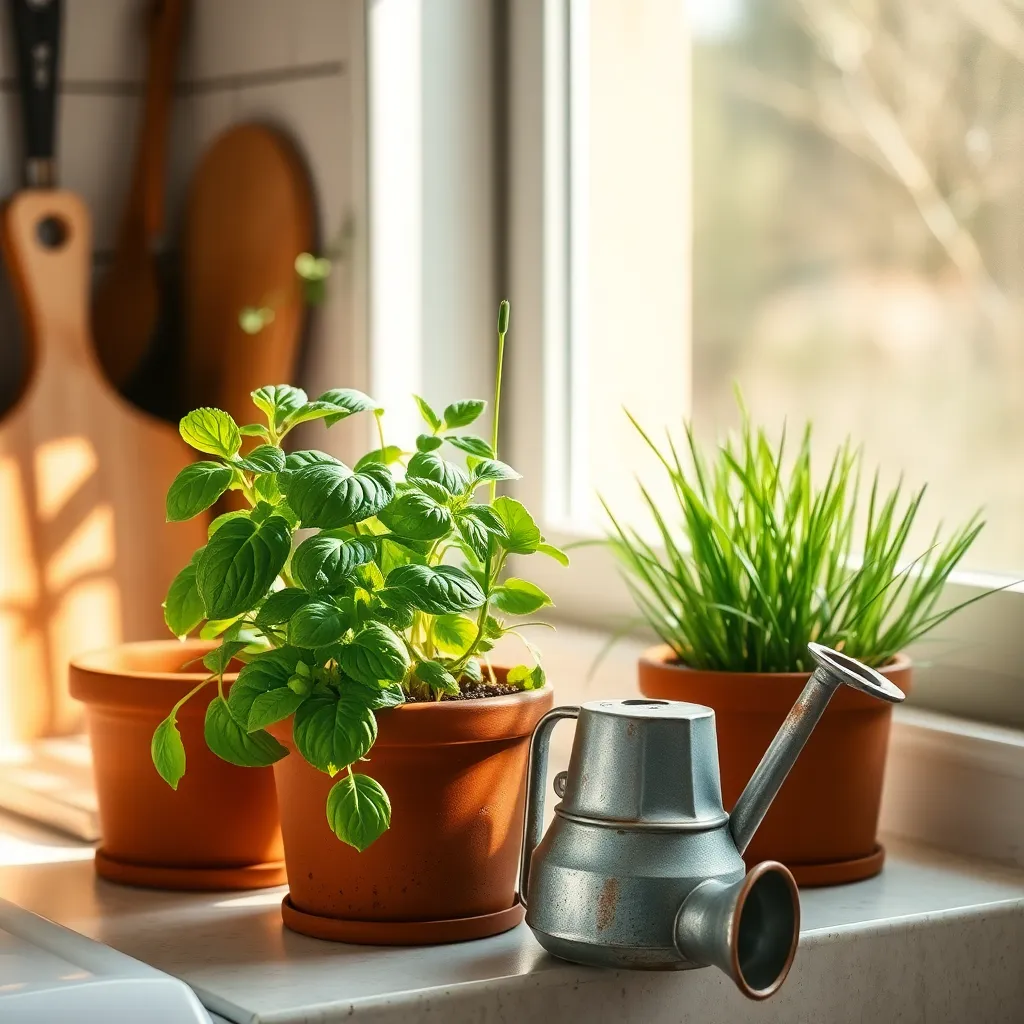
To select the best kitchen herbs, consider your cooking preferences and available growing conditions. Some popular choices include basil, cilantro, and mint, which are versatile and easy to grow indoors.
Herbs like basil thrive in bright, direct sunlight, making a sunny windowsill an ideal spot. Ensure you use well-draining soil to prevent root rot, and water basil when the top inch of soil feels dry.
Cilantro prefers cooler temperatures and partial sunlight, making it suitable for indoor growing during spring and fall. Keep the soil consistently moist but not soggy, and harvest leaves regularly to encourage new growth.
Mint is a hardy herb that can grow in less direct sunlight, perfect for shadier spots in your kitchen. To contain its aggressive growth, plant mint in a separate pot and use a moisture-retentive potting mix to maintain ideal hydration levels.
For more advanced gardeners, consider growing herbs like rosemary and thyme, which require slightly more attention. These herbs prefer a gritty, well-draining soil and should be watered sparingly to mimic their natural Mediterranean environment.
Find Optimal Light Source
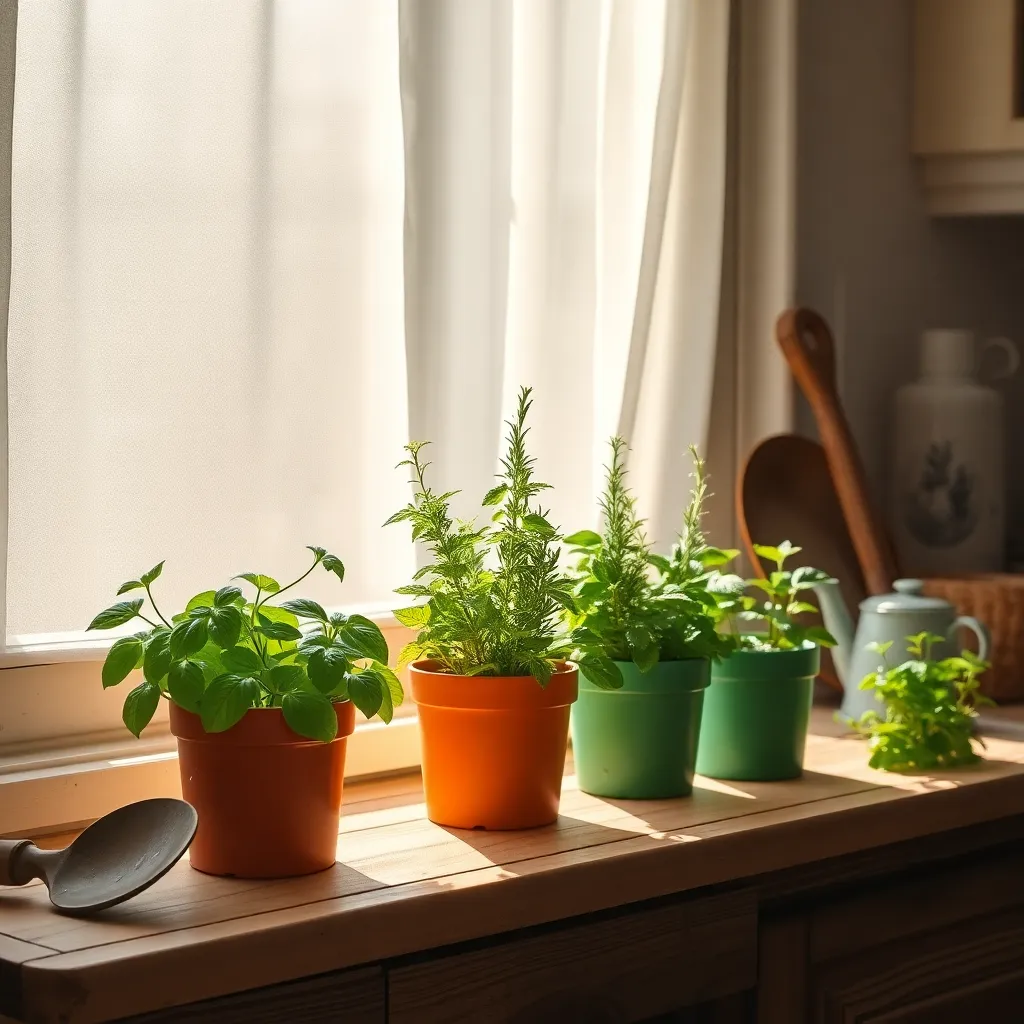
To grow fresh herbs successfully in your kitchen, it’s crucial to find the optimal light source for your plants. Most herbs, like basil and cilantro, thrive under bright light, so aim to provide them with at least six hours of sunlight daily.
Consider placing your herb containers on a windowsill that faces south or southwest, as this position typically receives the most sunlight. If your kitchen doesn’t have sufficient natural light, you can supplement with artificial grow lights to ensure your herbs receive enough illumination.
Investing in a full-spectrum LED grow light can be an excellent choice for your indoor herb garden. These lights mimic natural sunlight and are energy-efficient, making them a practical choice for year-round growing.
For those looking to maximize light exposure, rotating your herb pots a quarter turn daily can help each side of the plant get equal sunlight. This practice encourages even growth and prevents your herbs from leaning towards the light source.
Plant in Appropriate Containers
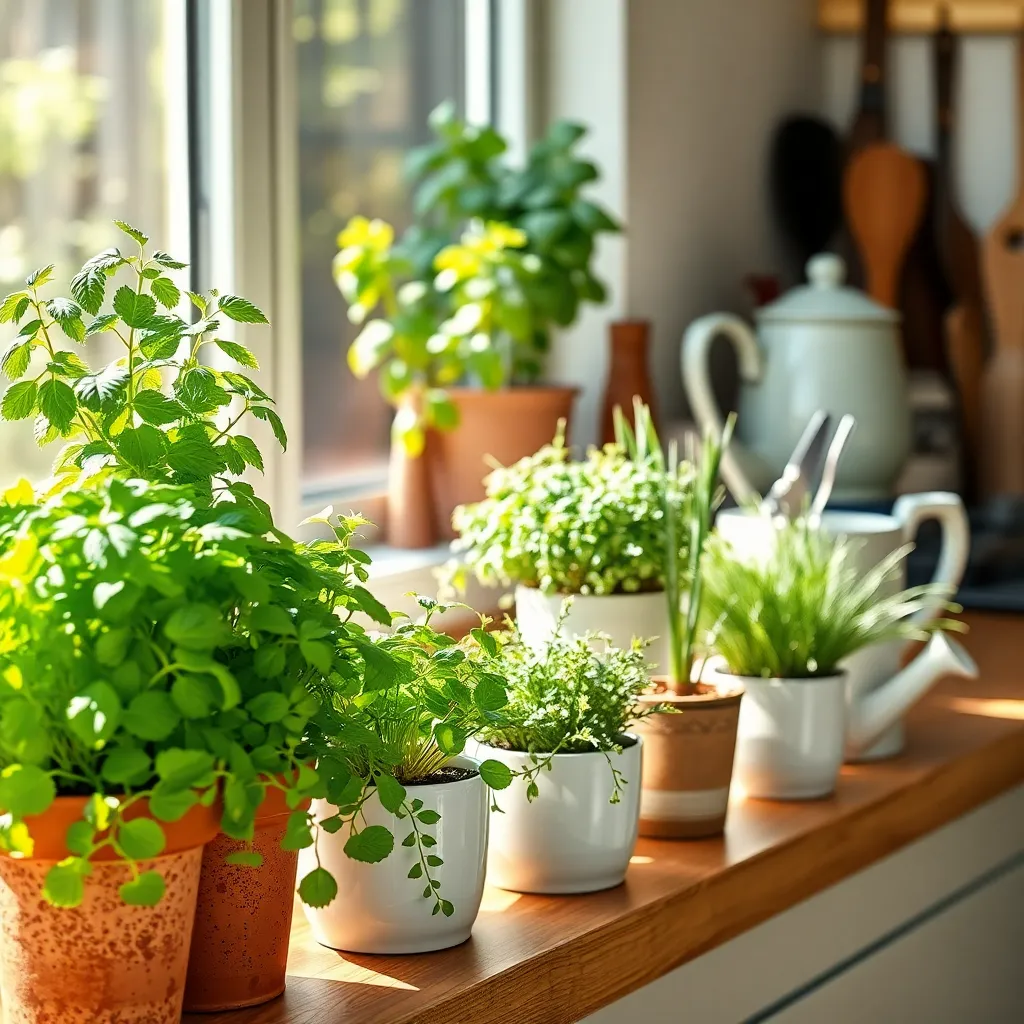
Choosing the right container is crucial for the success of your kitchen herb garden. Ensure that each container has adequate drainage holes to prevent waterlogging, which can lead to root rot.
When selecting a container, consider the maturity size of the herbs you intend to grow. Herbs like basil and mint require larger pots, typically 8 to 12 inches in diameter, while smaller herbs like chives and thyme can thrive in more compact containers.
Opt for containers made from materials that suit your environment and aesthetic preferences. Terracotta pots are popular for their breathability, but be aware that they dry out faster and may require more frequent watering.
For a beginner-friendly approach, start with a high-quality potting mix designed for herbs. This type of soil is lightweight and often includes added nutrients, promoting healthy root growth and reducing the need for frequent fertilization.
Advanced gardeners might consider mixing their own soil to better control nutrient levels and drainage. A good mix includes equal parts of garden soil, compost, and perlite or coarse sand to improve aeration and drainage.
Once your herbs are planted, place them in a location where they can receive consistent care. Check the soil moisture regularly, ensuring it remains slightly moist but not soggy, as herbs typically prefer well-drained conditions.
Water with Precision and Care
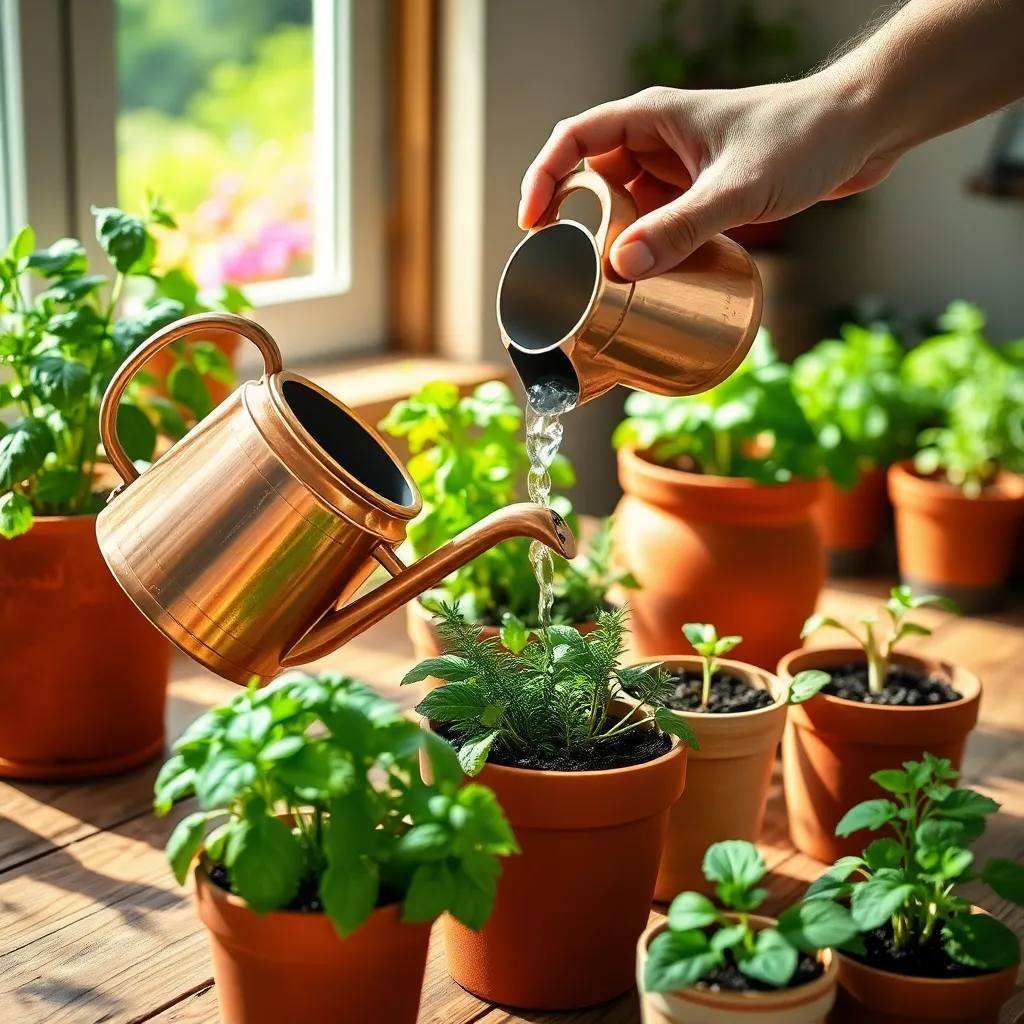
When watering herbs in your kitchen, precision is key to maintaining their health. Overwatering is a common mistake, so check the soil moisture by sticking your finger about an inch deep into the soil; if it feels dry, it’s time to water.
Use a small watering can or a bottle with a narrow spout to deliver water directly to the base of each plant. This method helps prevent water from splashing onto the leaves, which can lead to fungal diseases.
For most herbs, watering once a week is sufficient, but this varies based on environmental conditions such as humidity and light exposure. During particularly hot or dry periods, you might need to increase the frequency slightly, ensuring the soil remains moist but not soggy.
It’s beneficial to use room-temperature water to avoid shocking the plants. For a more advanced approach, consider using rainwater or collected tap water that’s been allowed to sit for 24 hours to let chlorine dissipate, which can be harsh on delicate herbs.
Harvest Regularly for Freshness
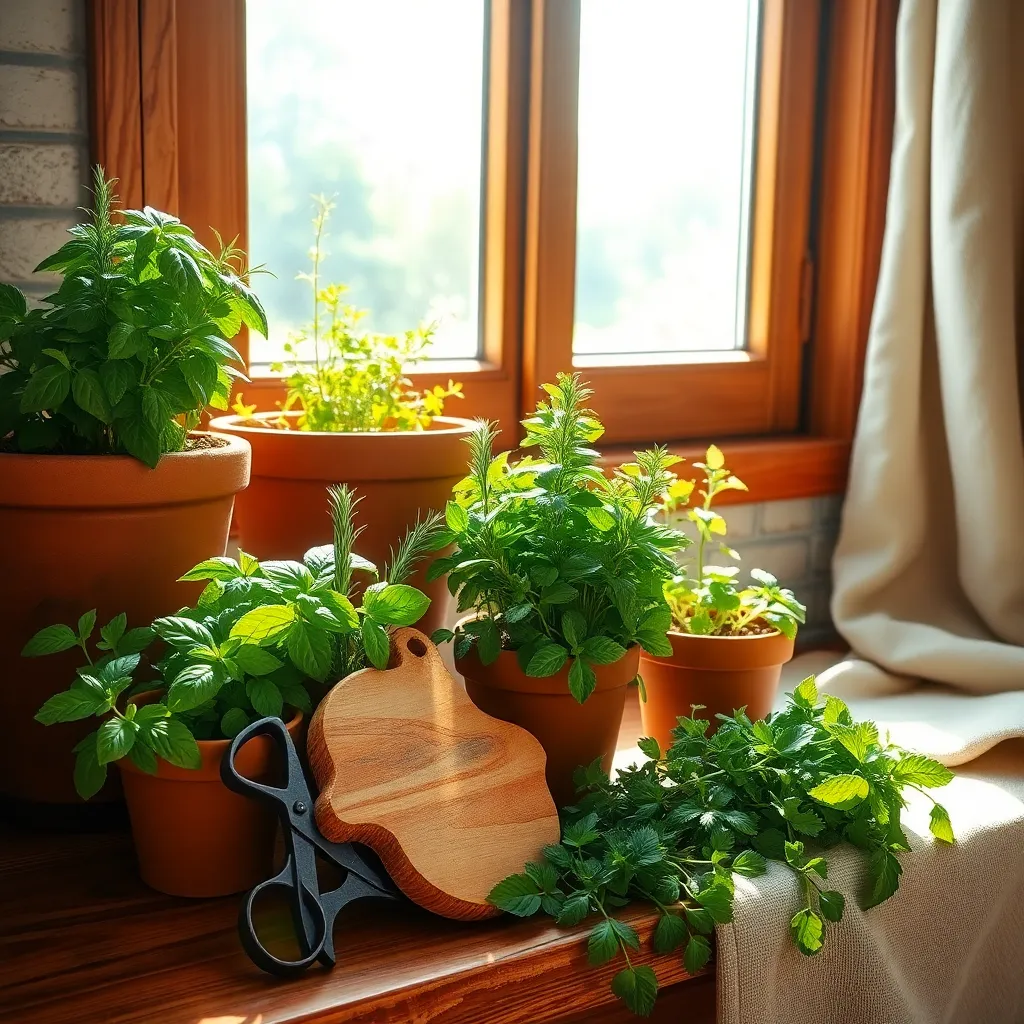
Regular harvesting is crucial to maintaining the health and flavor of your kitchen herbs. By trimming your plants consistently, you’ll encourage new growth and prevent them from becoming woody or leggy.
Begin by identifying which herbs need harvesting, such as basil, parsley, and mint, which benefit greatly from routine cutting. Use clean, sharp scissors or garden shears to snip the stems just above a leaf node, as this will promote bushier growth.
Always avoid over-harvesting, as taking more than a third of the plant at once can stress it and stunt its growth. Instead, plan to harvest a little at a time, which ensures a continuous supply of fresh herbs for your kitchen.
Consider the time of day when you harvest, as early morning is ideal because the essential oils are at their peak, enhancing the flavor and aroma of the herbs. For experienced gardeners, try succession planting in small pots to ensure that when one plant is fully harvested, another is ready to pick.
Conclusion: Growing Success with These Plants
In nurturing your kitchen herb garden, you’ve also cultivated essential relationship skills. First, patience is key—just as herbs need time to grow, so do relationships. Second, consistency in care ensures growth, whether it’s watering your basil or spending quality time with loved ones. Third, adaptability helps you thrive; just as you might adjust a plant’s sunlight, adapting to your partner’s needs is crucial. Fourth, communication is vital—talk to your plants, talk to your people. Lastly, shared goals, like harvesting your garden, strengthen bonds and enrich connections.
Ready to take action? Start by selecting one herb to grow together with someone special, turning a shared project into a bonding experience. Remember, relationships flourish when nurtured, just like your kitchen herbs. Bookmark this article now to revisit these insights whenever you need a reminder of the parallels between tending plants and relationships.
By embracing these principles, you’re not just growing herbs; you’re fostering thriving relationships. Your kitchen garden becomes a metaphor for commitment, resilience, and growth—a testament to the beautiful journey of cultivating love and connection. Here’s to your relationship success, now and in the future!

